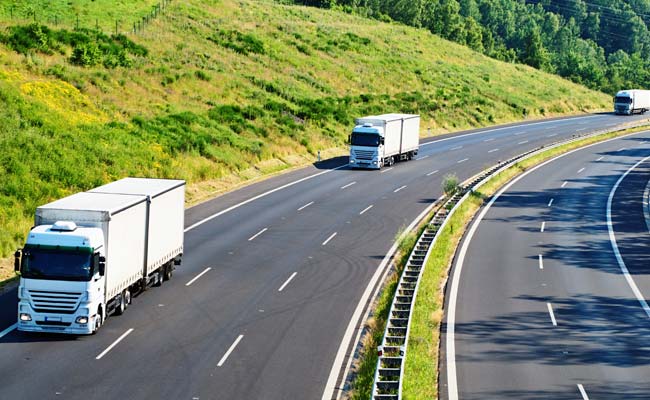
SAARC Motor Vehicle Agreement to ease cross border trade
The Dollar Business Bureau  According to an official release from Ministry of Road Transport & Highways, four countries belonging to South Asian Association for Regional Cooperation (SAARC) on Thursday finalized an agreement that would facilitate their cross-border trade. India, Bangladesh, Bhutan and Nepal, in a meeting from between February 2-3, 2015, at Raichak near Kolkata, discussed Motor Vehicle Agreement (MAV), under which the countries agreed for a seamless transit of passenger and cargo vehicles between their countries and draw up plans for its speedy implementation. This agreement, which has been prevalent in European countries, would allow the passenger, personnel and cargo vehicles of these countries, travel in designated key routes avoiding trans-shipment of goods and passengers at the border crossing. The countries, under the agreement also decided to form sub-regional committees which would look after the overall facilitation of land transport and monitor the agreement’s implementation. This sub-regional agreement, which would be a parallel one to the transport agreement, will allow neighbouring countries to become members. This latest move by the Ministry of Road Transport and Highways comes in the light of Nepal urging India to give more market access and accept their laboratory and quality standards. Krishna Prasad Dhakal, Charge d'Affaires, Embassy of Nepal in New Delhi, on Thursday, made above statements referring to Indo-Nepal bilateral trade as around $5 billion/annum, with imports by Nepal accounting for more than $ 4 billion. Due to political consequences and severe energy shortage, Nepal has been facing widening trade gap with India, which is also hurting Indians doing business at the Indo-Nepal border. At this juncture, India and Nepal, being part of the supposed SAARC agreement for closer trade at the borders, will come as a positive sign for the enhancement of Indo-Nepal trade relations. This agreement, that was expected to be signed at the meet of Transport Ministers of the four countries to be held later in this year, will hopefully turn the transport corridors linking the four countries into economic corridors.
According to an official release from Ministry of Road Transport & Highways, four countries belonging to South Asian Association for Regional Cooperation (SAARC) on Thursday finalized an agreement that would facilitate their cross-border trade. India, Bangladesh, Bhutan and Nepal, in a meeting from between February 2-3, 2015, at Raichak near Kolkata, discussed Motor Vehicle Agreement (MAV), under which the countries agreed for a seamless transit of passenger and cargo vehicles between their countries and draw up plans for its speedy implementation. This agreement, which has been prevalent in European countries, would allow the passenger, personnel and cargo vehicles of these countries, travel in designated key routes avoiding trans-shipment of goods and passengers at the border crossing. The countries, under the agreement also decided to form sub-regional committees which would look after the overall facilitation of land transport and monitor the agreement’s implementation. This sub-regional agreement, which would be a parallel one to the transport agreement, will allow neighbouring countries to become members. This latest move by the Ministry of Road Transport and Highways comes in the light of Nepal urging India to give more market access and accept their laboratory and quality standards. Krishna Prasad Dhakal, Charge d'Affaires, Embassy of Nepal in New Delhi, on Thursday, made above statements referring to Indo-Nepal bilateral trade as around $5 billion/annum, with imports by Nepal accounting for more than $ 4 billion. Due to political consequences and severe energy shortage, Nepal has been facing widening trade gap with India, which is also hurting Indians doing business at the Indo-Nepal border. At this juncture, India and Nepal, being part of the supposed SAARC agreement for closer trade at the borders, will come as a positive sign for the enhancement of Indo-Nepal trade relations. This agreement, that was expected to be signed at the meet of Transport Ministers of the four countries to be held later in this year, will hopefully turn the transport corridors linking the four countries into economic corridors.
This article was published on February 6, 2015.






 to success.
to success.